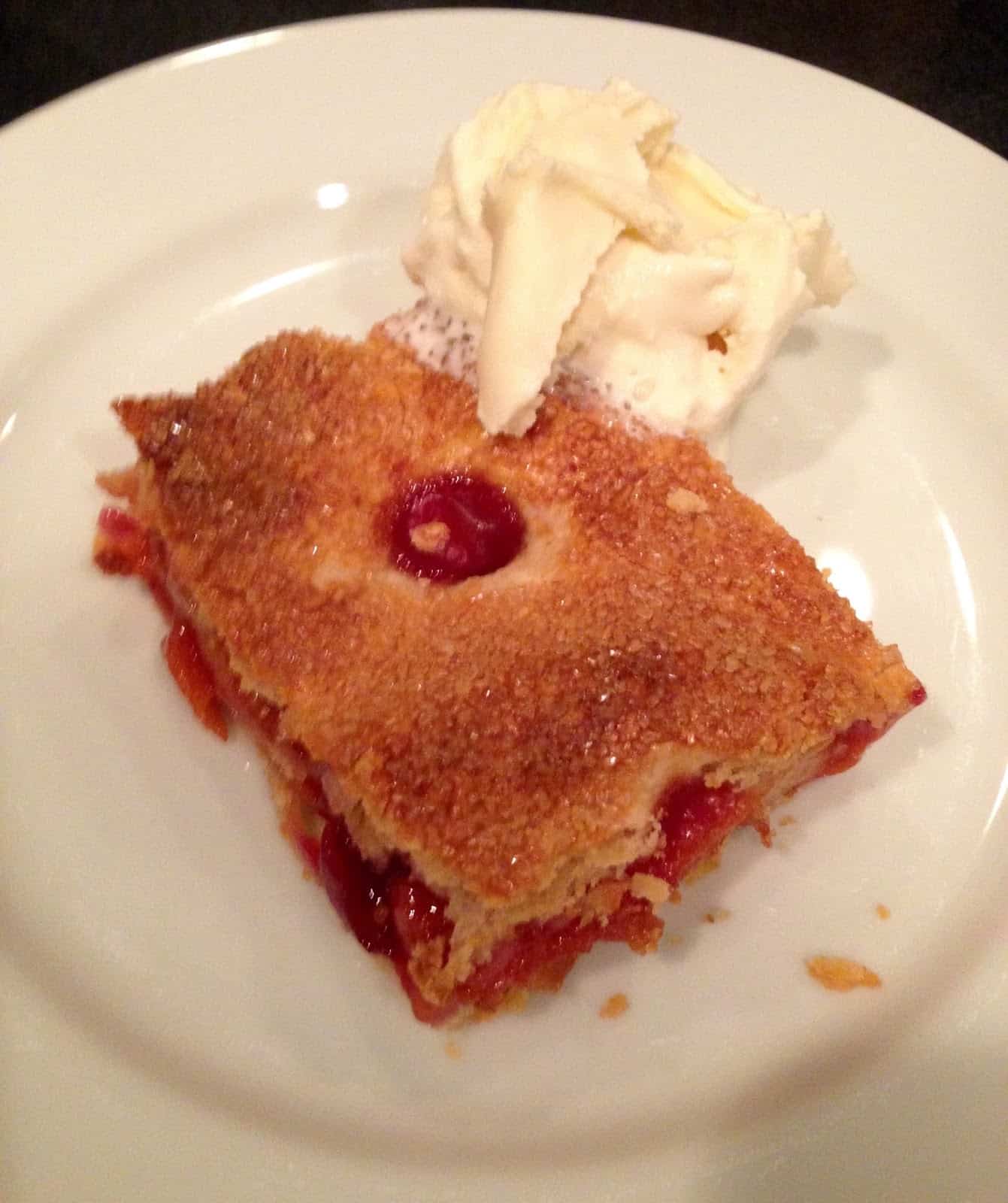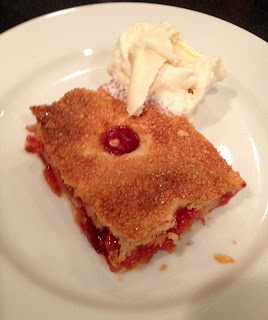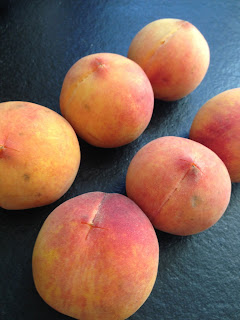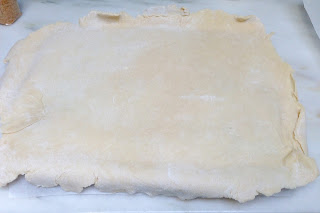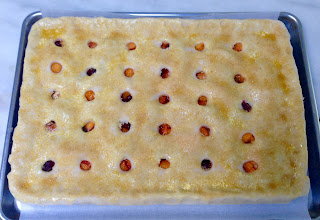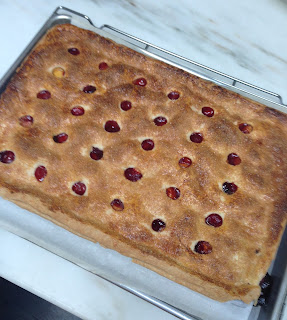I must confess that I am more than a little put off by the name of this remarkable pie. I mean really? “Slab” as in cold, stone slab or “slab of meat” both of which are less than appetizing and have little or nothing to do with the flaky pastry that surrounds the ripe, rich stone fruits that make up the filling in this crowd-pleasing dessert. And unlike a traditional 9 inch pie, this one does feed a crowd. This recipe will give you 16 servings of pie when cut into squares that are particularly appealing topped with iced or whipped cream. Darned if I could find the origins of this particular pie incarnation, although our friends at Food 52 tell us Martha Stewart has made so many variations of the pie that she ‘might have originated the whole genre’.
I somehow doubt that because in researching slab pies, the writer of a blog named “Dueling Margaritas” wrote that her grandfather, a baker and father of 11, made slab pies in the 1940s long before Martha was old enough to hold a rolling pin.
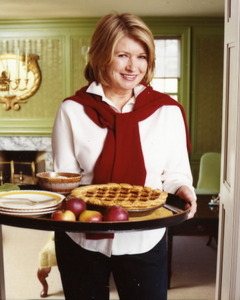 |
| Martha Stewart with a non-Slab Pie |
Nevertheless, Martha must be credited for bringing this pie to Andrew’s attention when we were entertaining a crowd too large for a conventional pie. And along the way in getting this post to you, I did find some fascinating pie history that I’d like to serve you along with a piece (or slab!) of pie. According to a writer named Janet Clarkson in her book “Pie: A Global History: (Reaktian Books 2009), the original purpose of a pastry shell was “ to serve as a baking dish, storage container, and serving vessel.” In fact, she goes to say early pies were often too hard to eat and for hundreds of years they were the only baking container used. They held meats and savories and were baked with no pan and sometimes were several inches thick to withstand the baking that sometimes extended to hours. In the 1600s in America, the Pilgrims used native berries and fruits and stretched their meager ingredients out in shallow pans, thereby creating an edible crust. By the 1700s, pies were served at virtually every meal. Sweet pies popularity grew and grew and by 1947, a Modern Encyclopedia of Cooking listed over 60 varieties. In the 1970s, as American homemakers eschewed their kitchens for the convenience of frozen food and TV dinners, pie baking took a hit. However, today pie is back in full force, thanks to influencers like Martha Stewart. So we come to Andrew’s version of Martha Stewart’s recipe. The only difference is his substitution of pitted cherries for her original call for raspberries. Truth be told, any stone fruit can be made into a slab pie filling. Here’s the recipe.
1. Toss peaches,pitted cherries, granulated sugar, cornstarch, lemon juice, and salt in a large bowl; set aside.
2. Transfer half the dough to a lightly floured work surface. Roll out dough into a 12-by-16-inch rectangle that is 1/8 inch thick. Coat a 15 1/4-by-10 1/2-inch rimmed baking sheet with cooking spray. Line sheet with parchment paper, leaving a 1-inch overhang on long sides. Transfer dough to prepared baking sheet. Trim edges of dough to hang over sides of baking sheet by 1/2 inch.
3. Roll out the remaining dough into another 12-by-16-inch rectangle that is 1/8 inch thick. Pour fruit mixture into the dough-lined baking sheet.
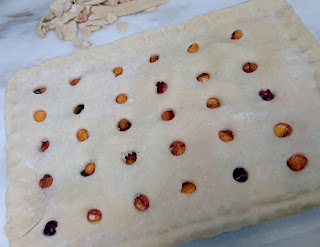 4. Cover with remaining layer of dough. Trim edges of dough to hang over sides by 1/2 inch. Fold edges of top layer over edges of bottom layer, and pinch to seal.
4. Cover with remaining layer of dough. Trim edges of dough to hang over sides by 1/2 inch. Fold edges of top layer over edges of bottom layer, and pinch to seal.
5. Cut about 60 holes out of the top crust using a 1/2-inch round pastry tip (such as Ateco #807), spacing evenly.
6. Whisk together egg yolk and heavy cream in a small bowl. Brush crust with egg wash. Sprinkle with sanding sugar.
